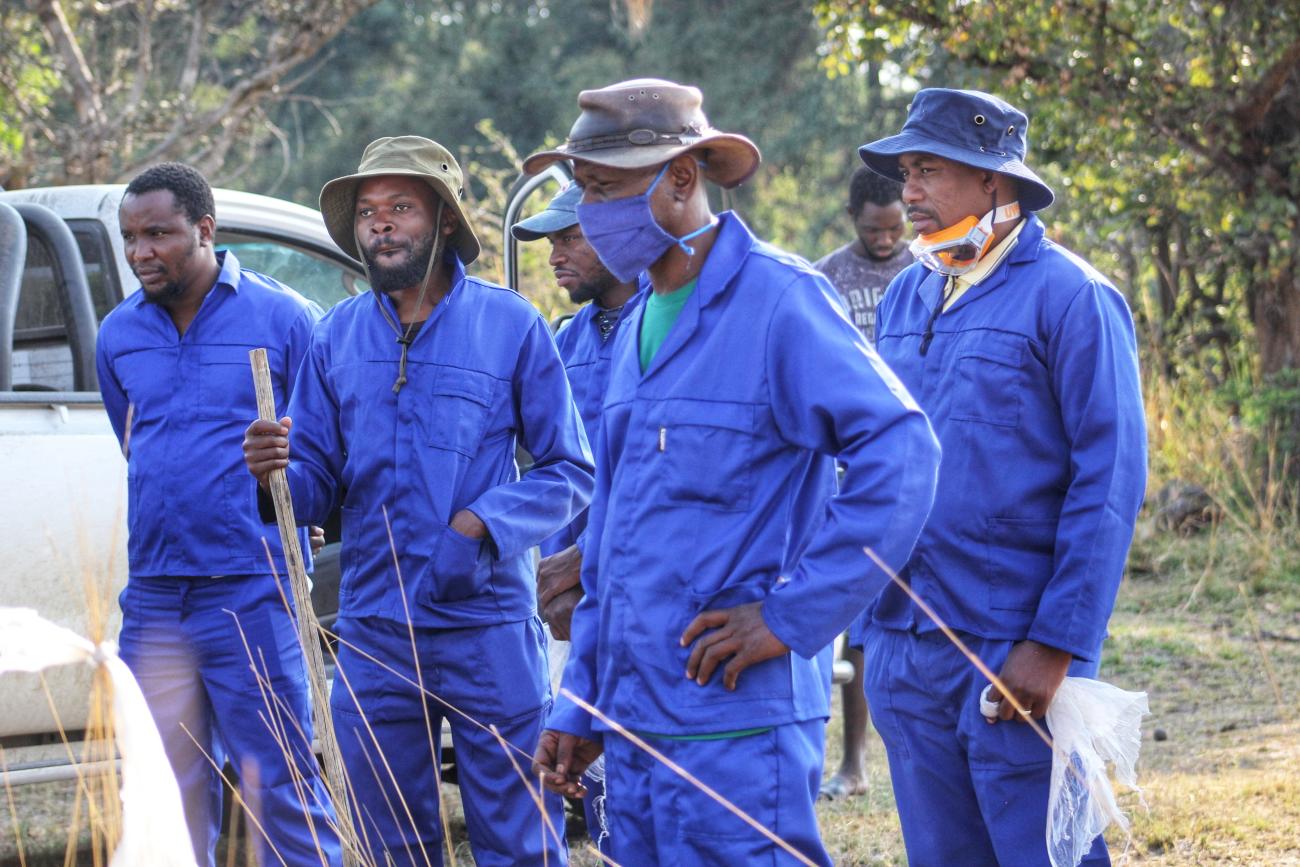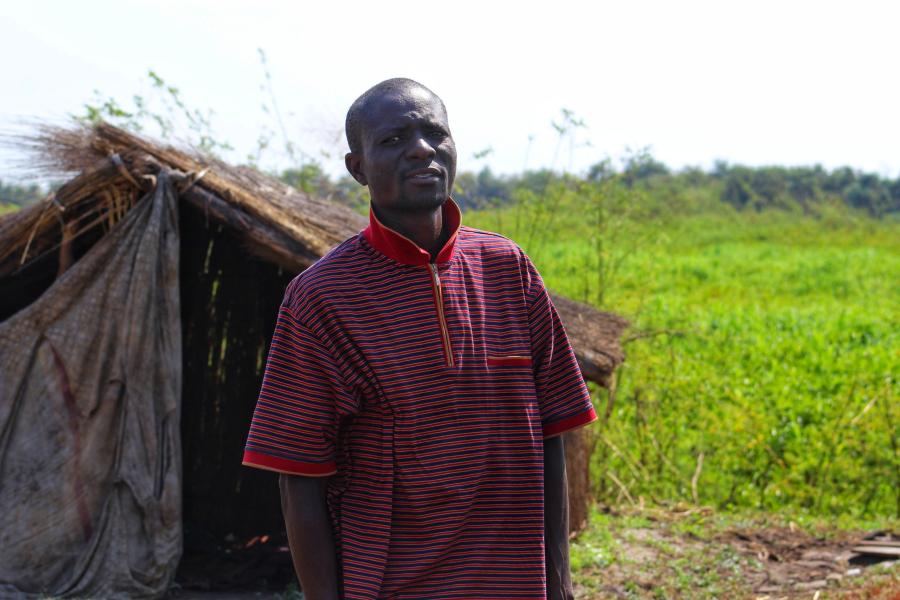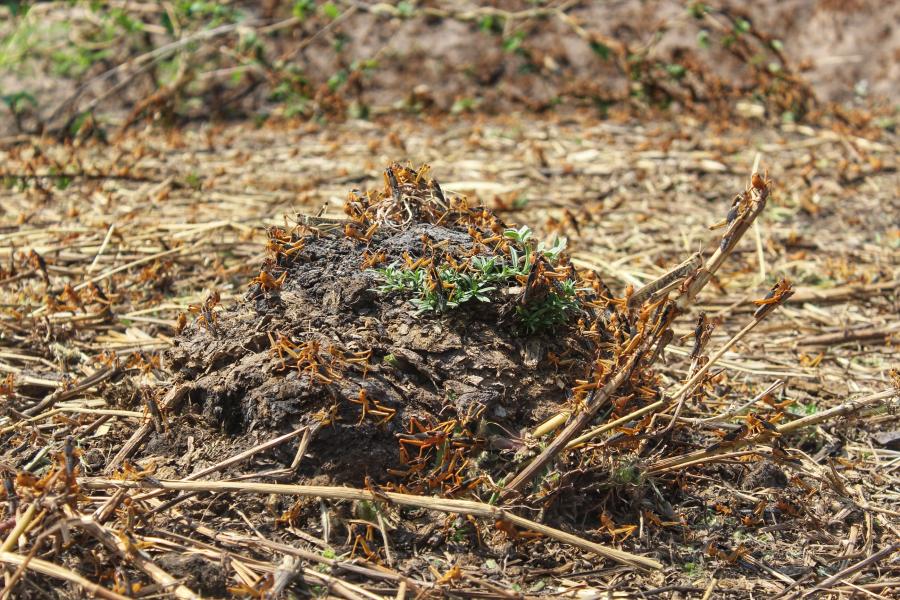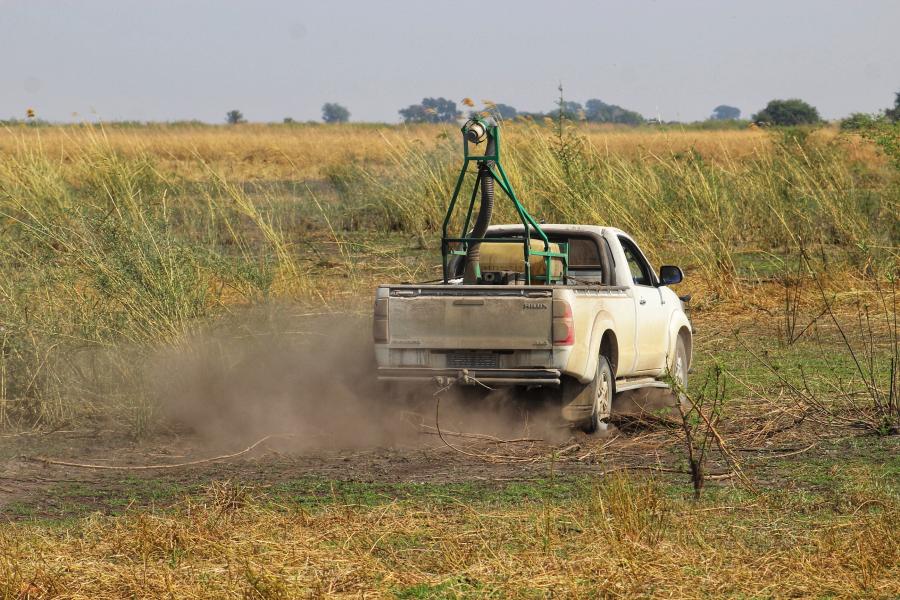Surviving in the midst of a locust outbreak

The locusts, which were first reported in February of this year 2020, have made a serious comeback after swarms were spotted in various parts of the region.
Fabian Sisamu says he has never in his entire life witnessed an outbreak such as the one he, and many others in Zambezi region, have been faced with over the past few months.

“This is the first time seeing such a scary situation ever since I was born here, nothing else can compare to such a serious threat,” said Fabian.
“It is the worst situation ever, we are fearful of the future,” his friend Ian Mubita chips in, visibly disheartened by what lays ahead for him and his family and friends.
Fabian and Ian, are both local farmers in Kasaya, a small farming outpost near Africa’s fourth largest river, the Zambezi River.
They are of course referring to the recent outbreak of African Migratory and Red Locusts (AML/RL) which have been terrorizing communities in Namibia’s extreme North-eastern region that borders Zambia and Botswana.
The locusts, which were first reported in February of this year 2020, have made a serious comeback after swarms were spotted in various parts of the region.
“At first we thought they wouldn’t pose such a serious threat to our livelihoods because they weren’t as many as we are seeing them now, but it seems we underestimated them,” Fabian continued.
The swarms of locusts are actively destroying the vegetation in the area, reducing grasslands to nothing but sand and threatening the very existence of the inhabitants in the region.
“These locusts are very vicious, they have no mercy at all, they chow down almost everything and anything green that they come across and hardly leave anything behind,” explained Ian.
Small-scale garden farmer fears the worst
“This is also my first time seeing so many locusts like these,” began Lionzi Hastings, a middle-aged small-scale farmer who owns a vegetable garden in Kasaya.
“They have completely wiped out the grass surrounding my garden,” said Lionzi, while pointing to the river bank which lays a few meters away from his garden. “I am afraid that they might come and clean out my garden if they are not brought under control,” he said worriedly.
Meanwhile to prevent his garden from being wiped out, Lionzi uses a popular pesticide that he purchased from a shop inKatima Mulilo. He says it has helped kept the locusts at bay but is unsure of the implications of using it on his veggies.
“I am not sure whether it is safe to use, but considering the situation I have no other option, the safest pesticides are expensive and I cannot afford them,” said Lionzi.
Local headman thanks stakeholders for assistance
A few kilometres west of Kasaya, in Kabbe North constituency the local headman in the area says the situation is critical and requires all hands on deck if the fight against the locusts is to be won.
Commonly referred to as Induna in the local language, George Matengu, says that his community first started noticing the locusts last year November and then again in July when the floodwaters were subsiding.
“My crop field where I had planted maize was badly affected, only the stalks of the crops remained but everything else was destroyed,” he said.
George says his situation is not unique, and that many other households, which are around 35 in the area, were affected the same way.

He says the food security situation has become dire and that most community members are now mostly surviving on purchasing food items such as maize meal despite their minimal household incomes.
George says he has informed community members of government’s strategy to contain the locusts and that most of them have been cooperating with the teams deployed to spray the area.
“The pesticide appear to be effective in that we have now started seeing dead locusts as they succumb to the spraying program ofthe government,” said George.
He encouraged government and all its stakeholders to continue efforts to bring the situation under control.
“We remain hopeful that the situation will be brought under control before the planting season starts and that efforts to reduce the outbreak will be doubled,” George enthused.
George is worried by the fact that the locusts are breeding at a faster rate than the spraying and has called upon for other effective means to be adopted to combat the locusts such as the involvement of community members.
“Perhaps the youth can be recruited to join the fight and be given something to remunerate them such as money or food,” George suggested.
How FAO is capacitating government efforts to help control the locusts
FAO is working with the Southern African Development Community (SADC) and the International Red Locust Control Organization for Central and Southern Africa (IRLCO-CSA) to support the governments of the four affected countries in Southern Africa to control the locusts.
These countries include Namibia, Botswana, Zambia and Zimbabwe. In Namibia, initial outbreaks began in the Zambezi plains and hopper bands and swarms were reported to have now been spotted in surrounding crop growing regions between the months of June and July this year. FAO recently launched the Southern Africa Emergency Locust Response and Preparedness Project which is funded by FAO’s Technical Cooperation Programme.

The project will increase the emergency response capacity of SADC and IRLCO-CSA to support the four affected member states in their bid to prevent the pest from causing more damage. The US$0.5 million project will focus on emergency response in the locust hotspots and strengthen coordination and information exchange among the affected countries.
In Namibia FAO has so far availed to the tune of N$300 000 inboth technical and financial assistance to the Ministry of Agriculture, Water and Land Reform (MAWLR) to ensure the training and deployment of an extra group of technical staff comprising of mainly Extension Officers to strengthen the ongoing battle against the locusts.
What are African Migratory and Red Locusts?
Although not related to the more ruthless Desert Locusts terrorizing many parts of the world including in East Africa, African Migratory Locusts (AML) also pose a grave threat to the food security situation in affected communities.
These particular locusts’ main breeding grounds, and original cause of most plagues, is on the flood plains of the Niger River and have a tendency to quickly migrate to other parts of Africa, including Sub-Sahara Africa.
AMLs prefer to lay their eggs on soft, moist soil. Making many flood prone areas in the Zambezi region an ideal breeding ground for the locusts.
Solitarious adults are usually green or brown in colour, while the gregarious adults are yellowish—brown or greyish with darker markings.
Red Locusts (RL) on the other hand are a large grasshopper species nomadic to sub-Saharan Africa, and breed abundantly under drought conditions followed by rain and rapid vegetation growth.
Their swarms are formed when these locusts congregate in tall vegetation to roost and are pose a greater threat of an outbreak when they roost in inaccessible areas.
The immature adults are a brownish colour, which eventuallygets deeper and redder with age, and have a distinctive yellow band running along their heads.
According to MAWLR, current swarms of both African Migratory and Red Locusts in Namibia are mainly flying in from its neighbouring countries, Botswana and Zambia.
Written by





